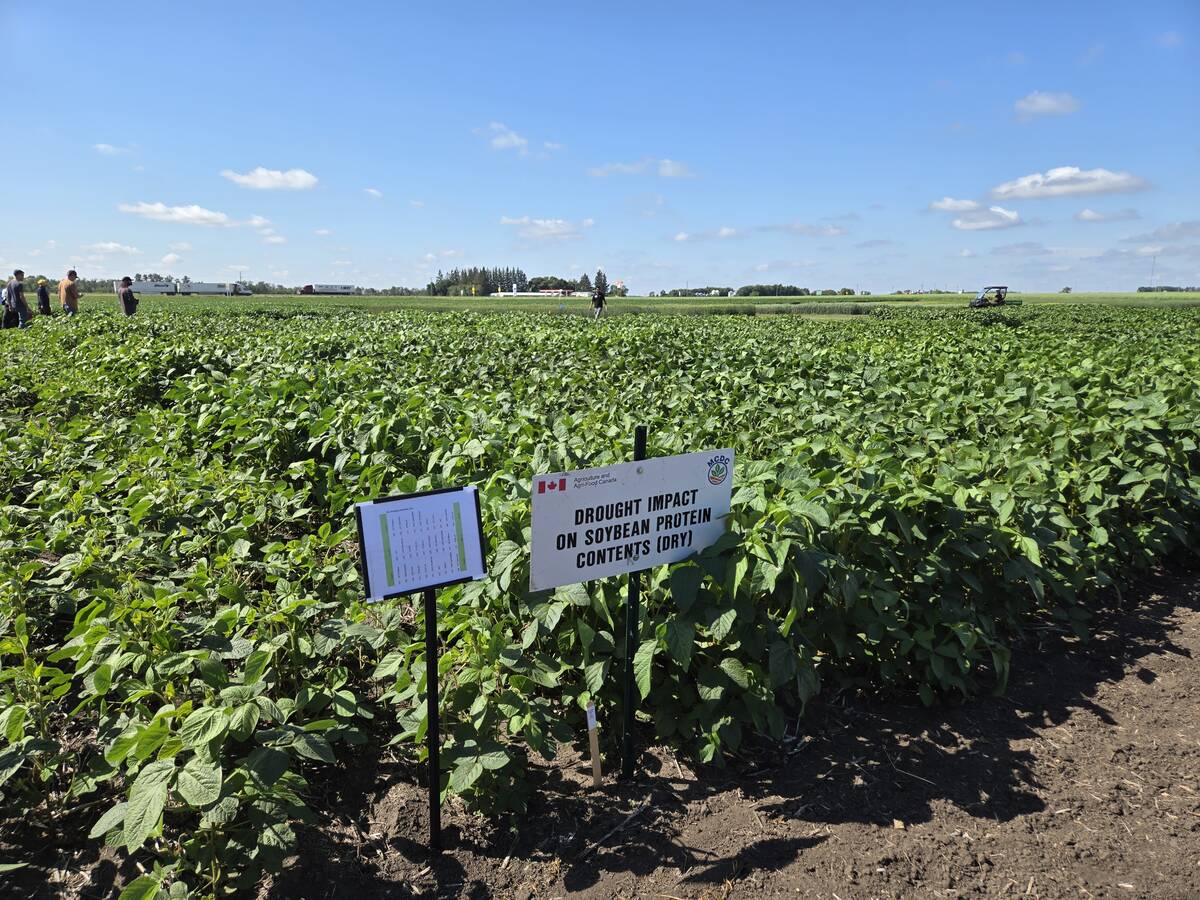What began nearly 30 years ago as a friendly irrigation agreement has morphed into an expensive and frustrating legal nightmare for Saskatchewan grain and oilseed grower Sam Enns.
Enns was one of the first producers in the province to use municipal waste water for farmland irrigation.
He signed an agreement in 1981 with the Town of Dalmeny, located about 20 minutes north of Saskatoon.
Under the original agreement, Enns was granted exclusive rights to use municipal waste water to irrigate the crops on his farm.
Read Also

Carberry field day looks for agriculture solutions
Manitoba farmers explored research solutions for resilient crops, perpetual agronomic issues and new kinds of agricultural products at a field day at the Manitoba Crop Diversification Centre in Carberry on Aug. 6.
He got nutrient-rich water and the town got an inexpensive and environmentally acceptable way to dispose of its waste water.
According to Enns, provincial effluent irrigation guidelines are at the heart of the current dispute.
The province drafted and published municipal waste water irrigation guidelines in 2004.
The guidelines recommend that effluent irrigation be prohibited within 60 metres of public roads and within 30 metres of adjacent farmland unless the irrigator gets prior written approval from neighbouring landowners.
According to Enns, compliance with the guidelines would require him to spend $30,000 on equipment upgrades.
The upgrades would allow him to automatically shut down sections of his pivots when they approached roadways and adjacent fields.
In a worst-case scenario, full compliance with the guidelines could potentially take as much as 140 acres out of irrigation. A loss of 140 acres of would represent a 30 percent reduction in his irrigated land base.
He also claims that he has spent hundreds of thousands of dollars on irrigation pivots, pumps, equipment and farmland since the agreement was signed.
“The situation is at a total stalemate right now,” he said.
“We have refused to become compliant and the pivots will sit until the guidelines are removed.”
To kick start the agreement with Dalmeny, Enns sold the town 22 acres of his own farmland so that new earthen lagoons could be constructed in the vicinity of his farm.
Problems started to arise when excess rain limited the need for irrigation.
In an effort to manage water levels, the town constructed an underground discharge line that would carry excess effluent roughly 15 kilometres away to Langham, Sask., where the treated waste water would be discharged into the South Saskatchewan River.
Enns agreed to let the town use his pumps and motors to move effluent through the line.
After the province published its guidelines on effluent irrigation in 2004, the town informed Enns that it would be enforcing the new provincial guidelines that restrict where irrigation can occur.
Enns is now refusing to let the town use his pumps and motors. That means effluent cannot be piped into the discharge line unless the town installs its own pumps.
“It really is the silliest situation that you could imagine,” he said.
Enns acknowledges that the town is in a difficult situation because their permit to operate the new sewage system is contingent on enforcement of provincial guidelines.
He argues that provincial rules should not be applied retroactively to his contract.
“But these regulations were just thrown on to my contract without any consultation.”
Bill Miller, manager within the municipal branch of Saskatchewan Environment, said the municipal waste water irrigation guidelines are viewed as voluntary.
But he said the guidelines can become mandatory if they are attached as a condition to a municipality’s permit to operate a sewage system.
Compliance with the guidelines has not been an issue in other areas of the province, he added.
About 30 Saskatchewan municipalities use effluent irrigation to dispose of treated waste water.
“As far as having problems with the guidelines elsewhere in the province, there are none that I’m aware of,” Miller said.
He said municipalities that use effluent irrigation are encouraged to have backup systems in place in the event that excess rainfall makes irrigation impossible.















